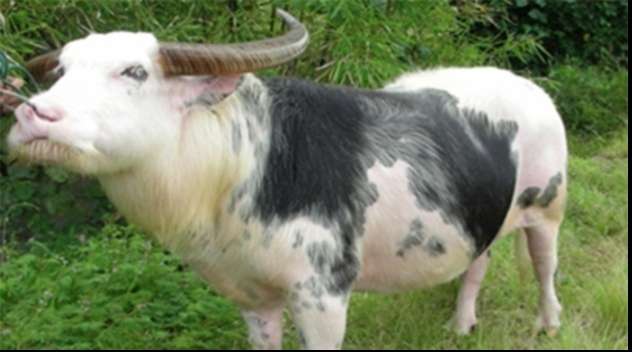Genetic findings could save threatened water buffalo

International collaboration between researchers at Uppsala University, the Swedish University of Agricultural Sciences (SLU), Bogor Agricultural University (IPB) and the Indonesian Institute of Sciences (LIPI) in Indonesia has led to the identification of two separate gene mutations which explain the white colouration of the tedong bonga water buffalo. The results could be used to conserve the threatened buffalo, an important livestock animal.
'We have collaborated with researchers in Indonesia in order to examine the underlying genetic reason for the white colouration of the tedong bonga by comparing it genetically with brown buffalos,' says Maria Wilbe, researcher at the Department of Immunology, Genetics and Pathology at Uppsala University and one of the authors of the study.
The Asian water buffalo (Bubalus bubalis carabanensis) is an important domestic animal in large parts of Southeast Asia, both economically and culturally. In the Toraja region in southern Sulawesi in Indonesia, there is a unique population of water buffalo called the tedong bonga. These are considered sacred by the native people who use them in their ancient religious traditions. The revered tedong bonga bulls are sacrificed when a person has died, which grants the deceased entry to heaven. At the funeral, the animal is butchered and the meat produced is an important food resource for the people of Toraja.
As the causes to the animal's patchy white colouration have previously been unknown, it has not been possible to breed enough tedong bonga buffalos. Their numbers have therefore fallen drastically in recent years and the tedong bonga is now threatened with extinction.
'The white fur colouration indicates a defect in the development and migration of melanocytes. These are cells which produce the pigment melanin. We therefore decided to look at a gene called MITF which we know is crucial to the development of melanocytes,' says Göran Andersson, professor at SLU, who has been leading the study.
'We identified two different and independent mutations in the MITF gene. Both of these disable the protein coded by the mutant MITF gene variants. The mutations have a dominant genetic effect and the tedong bonga buffalos have only inherited one mutant variant from their parents. The strong selection for two independent mutations in the same gene shows how powerful selection has been for this trait,' says Göran Andersson.
These results have led Yulnawati Yusnizar, a researcher at LIPI and one of the authors of the study, to open a breeding centre – the Indonesian Buffalo Conservation & Breeding Center in Bogor, Java, Indonesia. 'Based on our results, a method has been devised which allows us to identify in vitro fertilised embryos which grow into tedong bonga buffalos. This technique will increase the chances of survival for the tedong bonga water buffalo,' Maria Wilbe says.
More information: "Microphthalmia-associated transcription factor mutations are associated with white-spotted coat color in swamp buffalo." Anim Genet. 2015 Sep 28. DOI: 10.1111/age.12334
Provided by Uppsala University



















